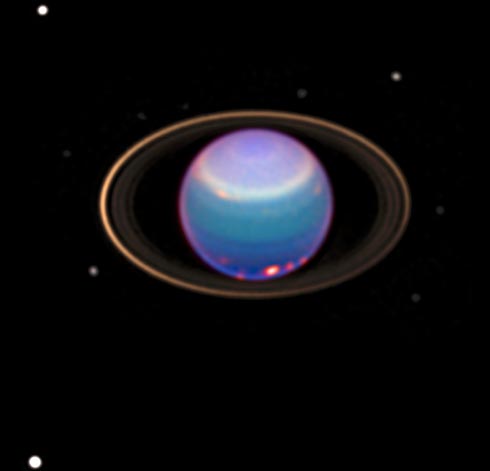Explanation: The Sun's third largest planet usually looks quite dull. Uranus typically appears as a featureless small spot in a small telescope or a featureless large orb in a large telescope. Last August, however, the Hubble Space Telescope was able to photograph Uranus in infrared light, where the distant planet better shows its unusual clouds, rings, and moons. Recent analysis indicates that clouds seen here in orange appear to circle Uranus at speeds in excess of 500 kilometers per hour. Comparisons to earlier photographs show a slight precession shift in the brightest of Uranus' rings. Several of Uranus' numerous small moons are visible.
1999 2000 2001 2002 2003 2004 2005 2006 2007 2008 2009 2010 2011 2012 2013 2014 2015 2016 2017 2018 2019 2020 2021 2022 2023 2024 2025 |
Yanvar' Fevral' Mart Aprel' Mai Iyun' Iyul' Avgust Sentyabr' Oktyabr' Noyabr' Dekabr' |
NASA Web Site Statements, Warnings, and Disclaimers
NASA Official: Jay Norris. Specific rights apply.
A service of: LHEA at NASA / GSFC
& Michigan Tech. U.
|
Publikacii s klyuchevymi slovami:
Uranus - infrared - ring - Uran - sputniki Urana - kol'ca planet - infrakrasnoe izluchenie
Publikacii so slovami: Uranus - infrared - ring - Uran - sputniki Urana - kol'ca planet - infrakrasnoe izluchenie | |
Sm. takzhe:
Vse publikacii na tu zhe temu >> | |
